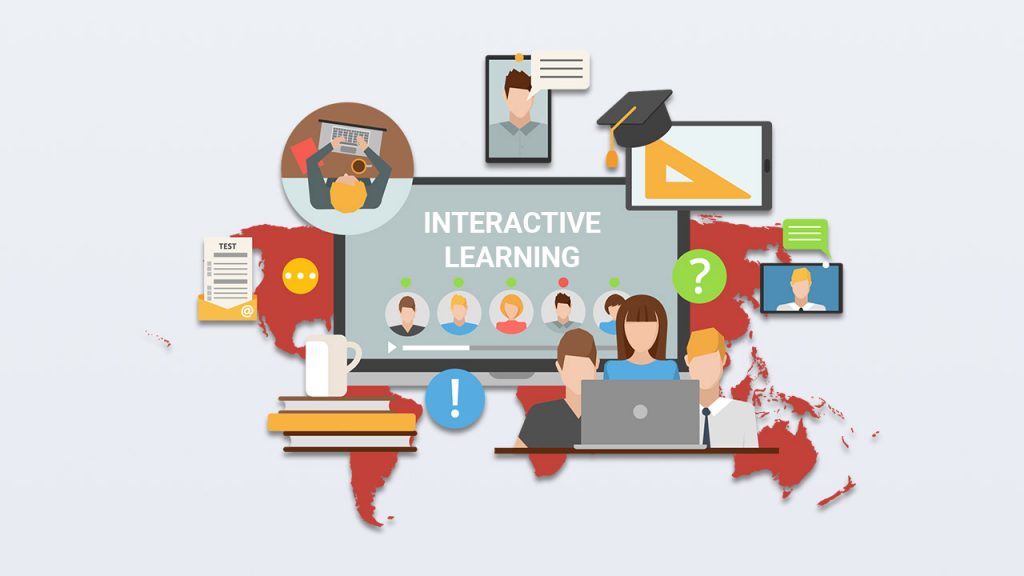In the video, the learner is put in a position where they have to interact with the system. Oftentimes, the learner is required to click on prompts to view, for example an external article. Additionally, there are many clickable objects such as buttons, links, and interactive questions that needs a response (yes/no) from the student. These interactive buttons/links would require the user to interact with it in order to continue to the next page or section. By having interactive tools all around the module, learners are likely to interact with them as long as it catches their eye or they know they need to perform an action to proceed. This is why interactive activities are great for learning because they tend to pull in the student, requiring them to interact with the material and proceeding along.
For our designated learning resource, students will complete several interactive activities from answering quiz questions like True/False, and solving mix and match puzzles. By providing a variety of small activities, this help keeps the student focused to completing these activities. This would also help build the students knowledge regarding the learning material. We would then have the activities to provide feedback after they complete each activity so that there is something the student can take away. There will also be additional resources linked with the feedback allowing the student to review answers or the textbook if needed.

That being said, the technology requirement in our resource is not high. We request that learners only need access to the internet which should be able to reach the webpage/module. They should be able to complete the module on a number of smart devices, but best experiences will still be on computer. Students will be completing interactive activities made from H5P. Utilizing H5P to complete the design of some of these tools gives us more room to come up with formative assessments. And H5P allows designers to put in a general feedback post quiz, which is extremely important for providing the correct answer and additional resources to the question/topic.
However, a more advanced method would be introducing greater technologies such as artificial intelligence and machine learning where it would learn a students thought process on their decision making/answers and to provide a more descriptive feedback to assist the student. Modern day, the topic of personalized learning often comes in where the idea is to come up with a student-tailored solution. This is important because every student has their own needs and moves at their own pace in learning. To do this, the mentioned artificial intelligence, machine learning, and many more algorithmic systems can help improve the needs of students. For example, Khan Academy utilizes machine learning to better improve student experience. There’s many more learning resources that has adopted different forms of artificial intelligence in their system to improve personalized learning. Since there is a need for better student education and a large growth in modern technology, combining the two may produce superb results such like Khan Academy, or Duolingo.
Overall, there could have been different activities in the video such as short introduction surveys. For example, by providing a few questions to ask the learner on what kind of interactive activity they want/like best. This would give the student a chance to input their needs and wants, which is important to keep the student focused and want to interact because they feel that their inputs are also important in the process. There will always be potential barriers to inclusive design, but we will ensure to include to a variety of activities that will help to teach a diverse range of students, and to continue checking up on them to ensure the learning process is smooth and successful.
References:
- https://www.turito.com/in/blog/general/hrd-ministry-guidelines-for-interactive-learning


Recent Comments